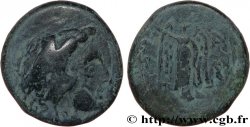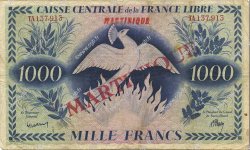- Accueil
- >
- >
v20_0007 - LUCANIA - VELIA Nomos, statère ou didrachme
MONNAIES 20 (2004)
Starting price : 200.00 €
Estimate : 350.00 €
Realised price : 235.00 €
Number of bids : 2
Maximum bid : 250.00 €
Starting price : 200.00 €
Estimate : 350.00 €
Realised price : 235.00 €
Number of bids : 2
Maximum bid : 250.00 €
Type : Nomos, statère ou didrachme
Date: c. 350/340 - 320/310 AC.
Mint name / Town : Vélia
Metal : silver
Diameter : 19,5 mm
Orientation dies : 6 h.
Weight : 7,37 g.
Rarity : R1
Emission: groupe VI, section 62
Coments on the condition:
Exemplaire sur un flan large et complet des deux côtés avec une faiblesse de frappe au droit sur le visage. A été légèrement nettoyé
Catalogue references :
Obverse
Obverse legend : ANÉPIGRAPHE ; MONOGRAMME DERRIÈRE LE CASQUE.
Obverse description : Tête d'Athéna à gauche, coiffée du casque phrygien à cimier avec triple aigrette, orné d'un centaure.
Obverse legend : KE
Reverse
Reverse description : Lion passant à gauche, dévorant une proie.
Reverse legend : UELHTWN/ A/KE
Commentary
De mêmes coins que les exemplaires du British Museum (BMC 82) et du musée de Copenhague. La série 60 du classement de Williams se caractérise par un monogramme qui correspond à la signature du graveur Kléodoros. Sur cet exemplaire, on distingue très nettement un début de cassure de coin au droit devant le visage. Au revers, on remarque la présence de deux minuscules points devant l’antérieur et sous la queue. Très tôt, le monnayage de Vélia a été décrit comme ayant inspiré la drachme lourde de Marseille (LT. 785-791). Certains l’ont même décrit comme un monnayage symmachique : un lion de Vélia étant l’équivalent de deux lions de Marseille. Aujourd’hui, cette théorie est remise en cause.
Same dies as the examples in the British Museum (BMC 82) and the Copenhagen Museum. Series 60 of the Williams classification is characterized by a monogram that corresponds to the signature of the engraver Kleodoros. On this example, we can clearly see the beginnings of a die break on the obverse in front of the face. On the reverse, we notice the presence of two tiny dots in front of the fore-end and under the tail. Very early on, the coinage of Velia was described as having inspired the heavy drachma of Marseille (LT. 785-791). Some have even described it as a symmachic coinage: one lion of Velia being the equivalent of two lions of Marseille. Today, this theory is being challenged
Same dies as the examples in the British Museum (BMC 82) and the Copenhagen Museum. Series 60 of the Williams classification is characterized by a monogram that corresponds to the signature of the engraver Kleodoros. On this example, we can clearly see the beginnings of a die break on the obverse in front of the face. On the reverse, we notice the presence of two tiny dots in front of the fore-end and under the tail. Very early on, the coinage of Velia was described as having inspired the heavy drachma of Marseille (LT. 785-791). Some have even described it as a symmachic coinage: one lion of Velia being the equivalent of two lions of Marseille. Today, this theory is being challenged








 Report a mistake
Report a mistake Print the page
Print the page Share my selection
Share my selection Ask a question
Ask a question Consign / sell
Consign / sell
 Full data
Full data















